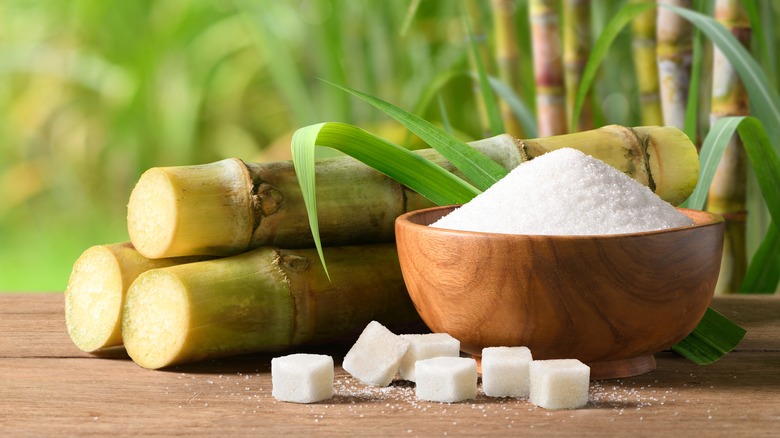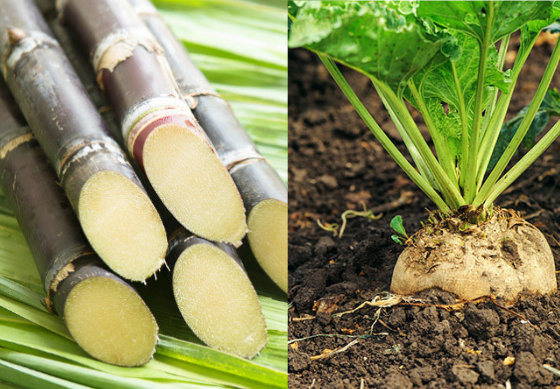The sourcing of beet sugar vs cane sugar affects farming impact in the sugar industry.
The sourcing of beet sugar vs cane sugar affects farming impact in the sugar industry.
Blog Article
Exploring the Distinctions in Uses and Advantages Between Beet Sugar Vs Cane Sugar
In the culinary world, the selection between beet sugar and cane sugar is not simply concerning sweet taste yet entails a nuanced factor to consider of flavor, application, and effect. While both sugars come from different plants, each undergoes special manufacturing procedures that discreetly influence their qualities and viability for various recipes. As cooks and customers increasingly prioritize both the ecological and taste accounts of their active ingredients, understanding these differences ends up being vital. This exploration uses insight into exactly how each sugar kind can best improve cooking productions.
Origins and Manufacturing Procedures of Beet and Cane Sugar

Cane sugar, on the various other hand, comes from the sugarcane plant, a tropical turf native to Southeast Asia however currently cultivated in exotic zones worldwide. The production of cane sugar begins with the harvesting of cane stalks, which are crushed to release the juice. This juice is then boiled to concentrate it, after which it is rotated in centrifuges to produce raw sugar crystals. These crystals are further fine-tuned to produce the white sugar generally readily available in shops.

Nutritional Content and Health And Wellness Considerations

When comparing the nutritional web content of beet sugar and cane sugar, it becomes obvious that both types basically provide the same caloric worths, with around 16 calories per teaspoon and no substantial nutrient diversity. Both sugars, when consumed in excess, can contribute to raised blood sugar degrees, a threat factor for diabetes mellitus and various other metabolic disorders. From a wellness perspective, moderating consumption of any type of kind of sugar, whether from beet or cane, is advisable to avoid these prospective unfavorable impacts on health.
Taste Profiles and Culinary Applications
Despite their comparable chemical structures, beet sugar and cane sugar vary subtly in taste, which can affect their usage in different cooking contexts. Cane sugar frequently lugs a tip of molasses, even in its polished kind, lending a warm, read the full info here caramel-like undertone that enhances baked items, coffee, and chocolate-based dishes. This mild molasses taste is especially valued in the cooking market for including deepness to desserts and pastries. On the various other hand, beet sugar is identified by its very improved, neutral preference, making it a functional sugar that does not modify the flavor profiles of recipes. This neutrality is specifically valuable in fragile dishes, such as light pastries, lotions, and some sauces, where the intrinsic tastes of other ingredients are meant to stick out. Chefs and food makers could select one kind of sugar over the various other based on the preferred taste outcome of their cooking creations.
Environmental Effect and Sustainability
While both beet and cane sugars are obtained from plants, their environmental effects differ dramatically due to the distinctive methods of growing and processing needed for every. Sugar beet growing frequently involves substantial mechanization, which can boost nonrenewable fuel source intake and carbon discharges. Beets can be expanded in cooler climates and need much less watering, potentially decreasing water usage contrasted to sugarcane. Sugarcane, on the various other hand, is typically grown in tropical areas where it depends greatly on irrigation and a longer growing period, increasing its water footprint.
Moreover, the processing of sugarcane commonly produces a significant Learn More Here quantity of waste, consisting of bagasse, which, although functional as biofuel, frequently adds to air pollution if burned inefficiently. Sugar beet processing uses even more of check my blog the raw materials, causing less waste. Both industries deal with challenges in minimizing their environmental impacts, however continuous advancements in farming practices and waste monitoring are aiming to improve sustainability.
Economic Elements Affecting the Sugar Sector
The financial characteristics of the sugar market are dramatically affected by worldwide market needs and trade policies. Factors such as tolls, subsidies, and worldwide trade arrangements play critical functions in shaping the competitive landscape. As an example, in areas where sugarcane or sugar beet production is subsidized, producers may have a financial advantage that allows them to use lower prices on the global market. This can develop disparities in earnings and market gain access to for producers in countries without such aids.
Additionally, changes in worldwide need for sugar, influenced by dietary fads and industrial use in food, straight effect rates and manufacturing degrees. beet sugar vs cane sugar. Climate condition likewise play a critical duty, as they can significantly affect plant yields and, consequently, the supply chain. This irregularity introduces a level of financial unpredictability that can bring about financial investment volatility in sugar production fields, influencing decisions from growing to market method
Final Thought
In final thought, both beet and cane sugar have distinct qualities that match various cooking demands. While cane sugar conveys a rich taste ideal for enhancing baked products, beet sugar's neutrality is best for lighter meals.
Report this page